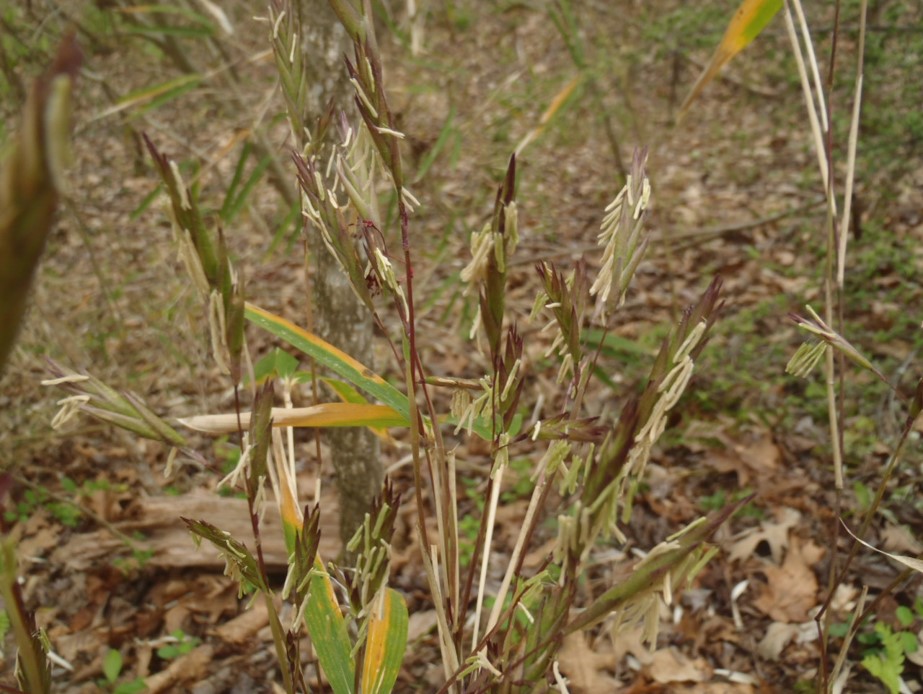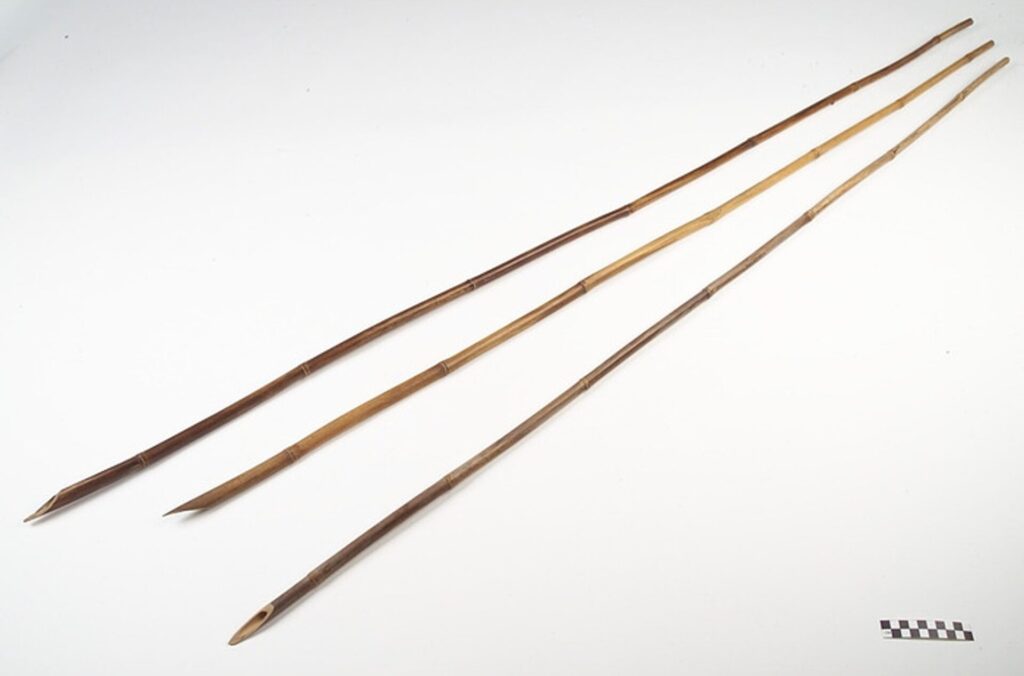Text and photos by Robert Carter except where noted
As a teen, I frequently spent time exploring a canebrake along the Sandy River near Carlisle, South Carolina. River Cane (Arundinaria gigantea) covered a large portion of the river floodplain offering the opportunity for exploration and mystery. Once in the thicket, the only clear view was above. The culms (aboveground stems) were so dense that I could only see a few feet around me. As I wove my way across the floodplain, I imagined that I was a Native American or early explorer. It was a mixture of apprehension and excitement. I was never sure what I would find with my next step. I also did not realize that I was experiencing a now rare ecosystem.
Canebrakes, meaning cane thicket, are dominated by a native grass species in the Arundinaria genus. Arundinaria gigantea prefer habitats along rivers and streams that occasionally flood but are not considered wetlands. Most people are not aware of the extensive canebrakes that bordered so many streams and rivers in the South nor their importance to wildlife, Native culture, and water quality. The roots and rhizomes hold the soil in place while also trapping nutrients during flood events. This increases floodplain productivity and reduces water pollution from fertilizers and sedimentation. The water slows down as it moves through the canebrake allowing the sediments to settle on the floodplain.

John Lawson (1701) and William Bartram (1775) described extensive canebrakes during their treks through the Carolinas. Bartram sometimes traveled miles through canebrakes along the rivers of the Carolinas. I highly recommend reading Lawson’s book, A New Voyage to Carolina, and Bartram’s Travels to gain an understanding of the flora, fauna, and Native culture of the 18th century Carolinas.
All Arundinaria species possess an underground rhizome and root system. Rhizomes are underground stems that grow parallel to the soil surface and produce branches called culms that break the soil surface and, in the case of Arundinaria gigantea, can grow as tall as 25 feet. The rhizomes show the same distinctive nodes seen in aboveground culms. Arundinaria species can be easily distinguished from imported bamboos by the angle between the branches and the culm. In Arundinaria, the branches are parallel to the culm for a short distance while the branches of bamboo come directly out of the culm at angles between 45 and 90o. This website provides images of the differences between native River Cane and invasive exotic bamboo: How-to-Identify-Native-River Cane-Arundinaria-gigantea-vs.-Invasive-Asian-Bamboo.pdf (conservingcarolina.org).
In the mountains and in some places in the Piedmont on dry slopes, you may find a smaller and deciduous Arundinaria species with papery leaves called Hill Cane (Arundinaria appalachiana). In the lower Piedmont and Coastal Plain, you may find wetlands with Switch Cane (Arundinaria tecta). Switch Cane is especially common in the wetlands and blackwater swamps.

A key characteristic for separating A. gigantea from A. tecta is the number of suppressed internodes at the base of branches. A. gigantea has 0-1 suppressed internodes while A. tecta has 2-5 (see morphological details here).
All the Arundinaria species are known to hybridize making identification a challenge at times. A new species called Arundinaria alabamensis has recently been identified and is endemic to a few counties in Alabama.
Canebrakes have been reduced by 98% since John Lawson traveled through the Carolinas. Bachman’s Warbler only nested in canebrakes and was recently declared extinct. The Passenger Pigeon and Carolina Parakeet also frequented canebrakes before their extinction. At least five insect species depend on River Cane to complete their life cycle. John Lawson described extensive canebrakes along rivers in streams that were frequented by bison, elk, and deer. A combination of fire suppression, damming of rivers, and grazing by cattle and pigs led to the dramatic decline. Cattle grazed the tender young culms while pigs rooted up the rhizomes.


The decline impacted wildlife and Native American cultures. The tribes of the South were a cane culture where Arundinaria was used for homes, warfare, and gathering food. The cane was split and used for the walls of building homes, furniture, and blowgun darts. The culm was dried and turned into blowguns and fish spears.
The Catawba and Cherokee still make River Cane baskets, but they struggle to find river cane large enough to practice their culture. Both tribes are striving to restore canebrakes so their basket weaving traditions will thrive.
I would venture to say few people have experienced the excitement and adventure of weaving their way through a dense river cane stand. The next time you see a lonely Arundinaria culm while driving down the road, pay attention to driving while you dream about being in a dense canebrake with bison running by as passenger pigeons fly above you. You catch the whiff of smoke as Native Americans set the canebrake on fire to stimulate new growth and drive game from the canebrake.
You are not likely to see bison running through a canebrake again, but there is a chance you could experience the thrill of traversing a canebrake. With public education and careful restoration management, some canebrakes can be restored. It will take a collaboration between grassroots conservation organizations and local, state, federal, and Native governments, but the suppressed rhizomes in the ground can be encouraged to burst towards the bright sun and spread along the riverbanks that yearn for its return. It is time to dream. Dreams can come true.
Text and photos by Robert Carter except where noted
Native Plant News – Spring 2024

Robert Carter grew up exploring the Piedmont of South Carolina. He attended Clemson University (BS, MS) and Auburn University (PhD) to obtain degrees in forestry. His graduate research involved identifying landscape ecosystems using plants, soils, and landform in the mountains of North Carolina and the longleaf pine ecosystems of lower Alabama. After a career in academia, he moved back to South Carolina where he is the Outdoor Education Specialist with the Catawba Indian Nation.

